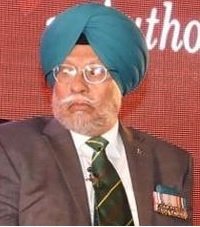To develop cordial relations between students, staff and parents, the management of Army Goodwill Public School organised an ‘Autumn Fete’ here on Saturday.The function, inaugurated by Maj Gen MV Suchindra, General Officer Commanding, Infantry Division, was attended by more than 600 students, staff and parents. They enjoyed various games organised by the school on the campus.Maj General Suchindra also inaugurated a plantation drive under which more than 1,000 saplings were planted by the students, parents and the staff.“The school also moved a step forward in the direction of digitisation and academic excellence by inaugurating ‘Gramonnati Centre e-Pathshala’ with facilities of tablets, laptops and accessories for the students between Class VI and VIII, especially for hostel inmates,” said a senior Army officer.He said Bansal coaching classes with an e-pathsala facility had been launched so that Class IX to XII students could prepare for the board and competitive exams.“To make the Autumn Fete more interesting, educative and successful, the students of the school also organised a cultural show for the audience,” said a school spokesman. — OC
All posts by webadmin
Exhibition on Sikh soldiers’ valour begins in UK
CHANDIGARH:A 15-day exhibition honouring the military tradition of the Sikhs was inaugurated at Slough, town in Berkshire, England, on Sunday. Organised by the Legacy of Valour Society, the Sikh Martial History Exhibition, covers centuries of history through the eyes of Sikh soldiers, reported Slough Express. The exhibition is open for public till August 12.

On display in the exhibition are material on Sikh solders’ sacrifices fighting alongside the British in World Wars, the Khalsa warrior spirit and the establishment of a Sikh kingdom in Punjab, reported Slough Express.
The Legacy of Valour is a community heritage project funded by the local Punjabi community living in Reading and Wokingham, UK. The aim of the project is to facilitate the community to engage with its own proud history — learn, understand and highlight the contribution made by Sikhs and other Indian soldiers. The project will reflect on aftermath of the war and how it affected Indian social, political, military and economic evolution.
The exhibition at the Wexham Road school was opened for private viewing on Saturday and to the public on Sunday. Special guests on Saturday included Ravi Singh, founder of Slough-based charity Khalsa Aid and 107year-old marathon runner Fauja Singh, according to Slough Express report.
United Kingdom’s first turbaned Sikh parliamentarian, Tanmanjeet Singh Dhesi, also attended the exhibition, along with historians and armed forces members.
“People were impressed in terms of the comprehensiveness of the exhibition,” society chairman Inderpal Singh Dhanjal was quoted by Slough Express as saying.

Army officer’s affidavit claims his unit behind fake encounters, extortion
Army fake encounters: Lieutenant Colonel Dharamvir Singh submitted the affidavit, a copy of which is with indianexpress.com, in connection with a Habeas Corpus petition filed by his wife Ranju Singh claiming her husband had been wrongfully detained.
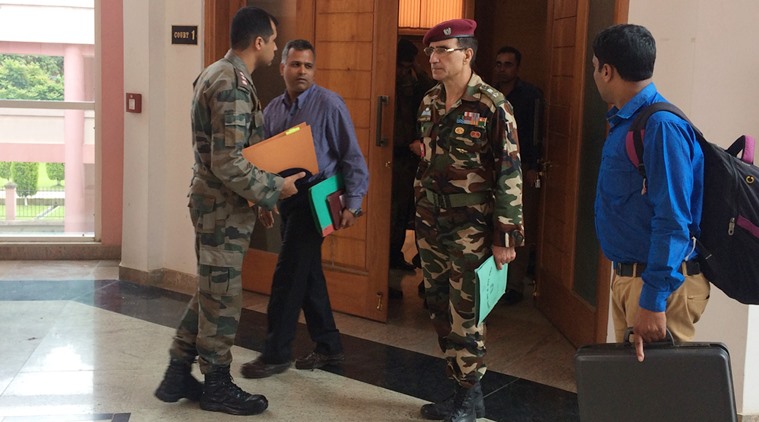
A Lieutenant Colonel of the Indian Army’s 3 Corps Intelligence Unit has in an affidavit filed in the High Court of Manipur alleged that an army team perpetrated extortion and killing of innocent people in the state. Lieutenant Colonel Dharamvir Singh submitted the affidavit, a copy of which is with indianexpress.com, in connection with a Habeas Corpus petition filed by his wife Ranju Singh claiming her husband had been wrongfully detained. The High Court has directed the Army to file their counter affidavit before August 1.
The affidavit alleged that Singh was taken away from his quarters in Imphal by armed jawans led by Lieutenant Colonel Nanda and Major Rathore on July 1 morning and kept under house arrest till the court directed his release five days later. The Army had refuted the claims as baseless and said the officer was sent for posting. Singh is currently on leave and staying with his family in Imphal.
In the affidavit, Singh alleged that he was the victim of an organised campaign by some senior officers who turned vindictive after he reported their wrongdoings. The affidavit claimed that on September 9, 2016, Singh wrote a complaint against the extortion and fake encounter killings of innocent boys from Manipur who were picked up from Dimapur in Nagaland and murdered in the nearby Rangapahar Cantonment. However, the affidavit alleged, he withdrew the letter following pressure from top and after assurances that suitable action will be taken against the erring personnel.
Singh, in the affidavit, also claimed a serious threat to him and family.
The affidavit alleges three alleged fake encounters and an extortion case perpetrated by a single team of the 3 Corps Intelligence Unit between 2010 and 2011. Singh also sought the court’s permission to submit the 13-page official letter he had prepared on September 9, 2016.
Singh’s affidavit alleged that on March 10, 2010, three Manipuri youth — identified as Phijam Naobi, RK Ronel and Th. Prem — were abducted from a rented house in Dimapur by 3 Corps Intelligence Unit and killed behind the Mess. As per media reports, bodies were found in the Lakhijan area under Bokajan police station in Karbi Anglong of Assam on March 17, 2010, it said.
A case is pending in Gauhati High Court and Major T. Ravi Kiran was the first one who wrote a letter to the then General Officer Commanding (GOC) on March 12, 2010, stating that three Manipur youths were abducted by the Army’s intelligence surveillance wing and shot dead after torture.
In a similar incident, the affidavit claimed, ST Dominic College student Satish from Manipur and his friend were picked up from Shillong by the same team on February 5, 2010 and both were killed in the jungles of Masimpur. Satish’s parents lodged a formal missing complaint to DGP Manipur on February 23, but till now no efforts have been made, the affidavit claimed.
On August 18, the affidavit alleged, PLA militant G Jiteshwar Sharma alias Gypsy and a friend were picked up from a rented room near SM College in Dimapur and killed. The bodies of both were buried behind the unit mess and few unit persons know the exact location, the affidavit claimed.
The affidavit also alleged that the same unit was behind the kidnapping of a woman and her child from Dimapur and released them after taking a ransom of Rs 1 crore from her family.
The local Army PRO said he was not authorised to comment as the matter was sub judice.
For all the latest North East India News, download Indian Express App
Imran Khan can be a game changer for Indo-Pak ties
He may want friendly relations with India, but would find himself hemmed in by the giveandtake of negotiations
Having set course for the prime minister house, Imran Khan lowered his voice at one point during a televised address — almost appearing hurt — to say he was troubled that over the past several days Indian TV channels were painting him as some sort of a “Bollywood villain”. This, he said, despite the fact that he had many friends in India due to his cricketing ties. He later said that India and Pakistan need to improve their relations, benefit from trade opportunities, and address a common curse: poverty. There was one caveat: the peaceful resolution of the “core” issue of Kashmir first.

As opposition parties, which lost the election, were protesting against Khan’s victory and attributing it to rigging that, they alleged, happened mostly during the counting of ballots and results tabulation, the PTI leader was making his first address to the nation.
He looked prime ministerial. His tone was so measured that few were familiar with it, at least given his language and mannerism since he refused to accept the 2013 election results, which gave the Nawaz Sharif-led Pakistan Muslim League (PML-N) a huge win.
When eventually the Panama Papers weakened Sharif and his troubles compounded after falling out with the military reportedly over differences about national security policy priorities, Khan’s petition to the Supreme Court to inquire how the PM’s family came to own undeclared properties in London’s expensive Mayfair district acquired greater significance.
It was this petition that resulted in the former PM’s disqualification from holding office last April followed by his and daughter Maryam Nawaz’s sentencing to prison terms by an Islamabad court earlier this month. The court tried both under the Supreme Court’s supervision. Having promised to construct five million low-cost homes for the poor and provide 10 million jobs during his term in office, he will assume office carrying a burden of expectation at a time when higher oil prices, a trade and current account deficit, dwindling forex reserves and a fast-depreciating currency will test his economic team’s skills.
He may want friendly relations with India and may be well-placed to start a dialogue, given that he will enjoy the military’s support, with the hardliners in Delhi, but may find himself cramped in the give-and-take that must happen in any negotiations.

Last border village to host its first lit fest
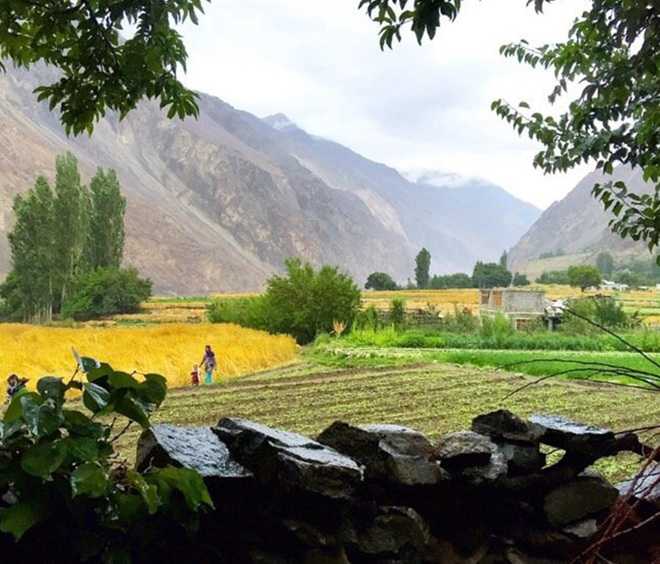
M Aamir Khan
Tribune News Service
Srinagar, July 27
A first-of-its-kind cultural festival is being organised next month in the Nubra valley’s Turtuk area — known as the last village along the Line of Control (LoC).The fest is aimed at connecting the divided families of the ethnic Balti community living in the Ladakh region and highlighting their unique art, literature and culture.Once known as the gateway to the ancient Silk Road, Turtuk had come out of Pakistan’s occupation after the 1971 war. Through the fest, the J&K Academy of Art, Culture and Languages (JKAACL) wants to introduce the Balti literature to the rest of the world.“This is our first initiative and it’s huge. It took us a year to finalise the programmes for the ‘Balti Literary and Cultural Festival’ that will be held on August 3 and 4. After the 1971 war, the Balti community got divided and we want to connect the families living in Leh and Kargil. We also want to promote their unique art, culture and literature,” deputy secretary (culture) Nazir Hussain told The Tribune.He said the fest would also give an opportunity to the people of the Balti community to give vent to their sorrows. “They are divided and they went through a lot after the 1971 war…. some have relatives living on the other side of the LoC…. we want to bring those living in Ladakh to one place where they can narrate their woes. We also want to make it a yearly event,” he added.Stating that the villagers of Turtuk were upbeat over the festival and had given full support to the JKAACL, Hussain said the main attractions of the event would be cultural programmes, paper-reading sessions, mehfil-e-mushaira and traditional horse polo matches, among others.JKAACL secretary Aziz Hajini said the academy had earlier held an event in Zanskar and such festivals were being held to promote the rich art, culture and literature of ethnic communities of the state, especially the lesser-known ones of the Ladakh region.
Airing grievances: Keep the chain of command intact by Brig Indrajeet S Gakhal retd
Army Chief Gen Bipin Rawat’s reachout to jawans through WhatsApp has eroded the long-established norms
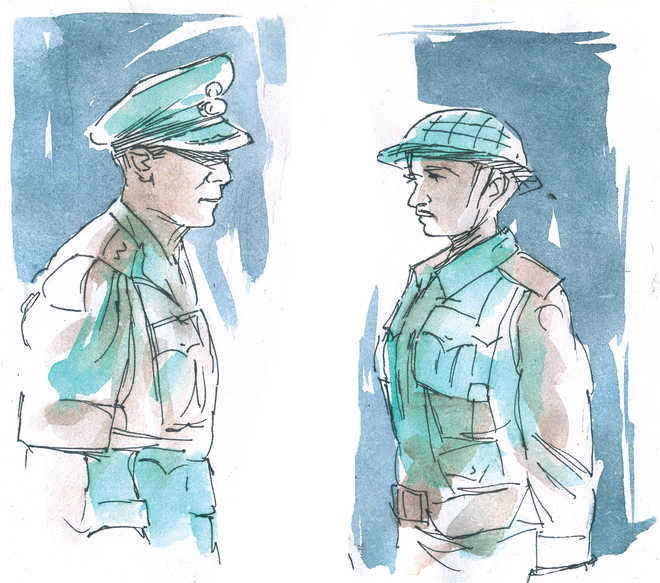
Brig Indrajeet S Gakhal retd
Having attended the evening company roll call as a young Lieutenant (in 1975), I and Subedar Karam Singh, senior JCO, Alfa Company, were walking to the dining hall when he said: “Saab, 426 Sher Singh da ik gharelu jhagra hai teh uh tuhanu milna chaunda hai (No 426 Sepoy Sher Singh has a domestic conflict and he wants your audience).” “Theek hai Saab, usnu tay usday Platoon Commander nu bula lao (Ok, call him and his Platoon Commander),” I said.After a while Naib Subedar Rawail Singh and Sepoy Sher Singh stood before me after the customary “Sat Sri Akal sahib bahadur”. Naib Subedar Rawail Singh then explained the Sepoy’s problem. Next morning, armed with a letter to the Senior Superintendent of Police, Bathinda, Sher Singh was on his way home on a seven-day leave. The crux is that the aggrieved jawan through his Section NCO and Platoon Havildar approached the Platoon Commander who in turn reported to the senior JCO and to me. The chain of grievance redressal follows the chain of command. At no stage, Sepoy Sher Singh needed to jump the line to go directly to the Company Commander or the Commanding Officer. In another incident, when I was at the Brigade Headquarters, an anonymous letter came through the complaint box. It purported that the JCO Quarter Master was pilfering ration. A surprise check of the ration store found some discrepancies and the JCO was dealt with under the law. Once a jawan reported to the Subedar Major that he wished to be relieved of buddy (Sewadar/Sahayak) duties as he was treated rudely. The Subedar Major reported to the Commanding Officer who, investigated discreetly and had posted the jawan as his officer runner. Yet again at the Unit Sanik Sammelan (Durbar) after the points received from the companies and points by the Commanding Officer were passed, the Commanding Officer invariably said. “Meri taraf se aur koi point nahi hai; agar kisi jawan ya NCO ko koi point yaad aaya hai to woh abhi keh sakta hai (I have no more points to render, if any jawan/NCO has any point to make, he is free to do so).”Once during such a meet, a jawan rose, saluted and said: “No… Sepoy… Shriman mera point yeh hai ki working party 5 baje ke baad nahi honi chahiya kyun ki baad main nahane ko pani nahi milta (Sir, there should be no working party after 5 pm as then there is no water for bathing thereafter).” The Commanding Officer addressed the issue instantly and passed executive orders. In short, the existing grievance redressal system has worked well for three odd decades. The system exists in all Army units — combat arms, support arms or services. However, its systematic enforcement is more effective in Combat Arms and Support Arms. This is borne out by empirical data on the grievance correspondence initiated from the Services.Army Chief General Bipin Rawat’s reachout to jawans through WhatsApp has eroded the long-established norms. He has launched a WhatsApp number through which any soldier can post his/her grievances. This practice will undermine the existing chain of command that is critical in operations. The announcement has also fanned an anti-officer sentiment. I think this will prove disastrous for the command and control structure and challenge the future leadership.That is not to say that all is hunky-dory in the leadership, which needs introspection and bridging the growing gap between the Commander and his Command.
Retd Col’s son found dead at farmhouse
Ambala, July 15
A 46-year-old man was found dead under mysterious circumstances at his farmhouse in Janaitpur village of Ambala here on Sunday.The body was in a decomposed condition and it appeared that it was there for nearly 10 days. The deceased has been identified as Jeet Mahender Singh. He was the son of Colonel Sucha Singh (retd), a resident of Defence Colony.As per information, Jeet was a divorcee and was living alone there. He last met his father on July 2.Investigating Officer Surender said, “The father of the deceased said that on Sunday, he went to a gurdwara to pay obeisance. There is a shop near the gurdwara from where his son used to purchase groceries. He inquired about his son and the shopkeeper informed that he hadn’t seen him for the past several days. Then, he went to the farm house and found his son dead.”Station House Officer of Panjokhra police station said, “The cause of death will become clear after post-mortem examination.” — TNS
fixation of pay of Officers of the rank of Lt Col (Level 12A) and Colonel (Level 13) Vide MOD
Security, not displacement Punjabis in Meghalaya should not be relocated
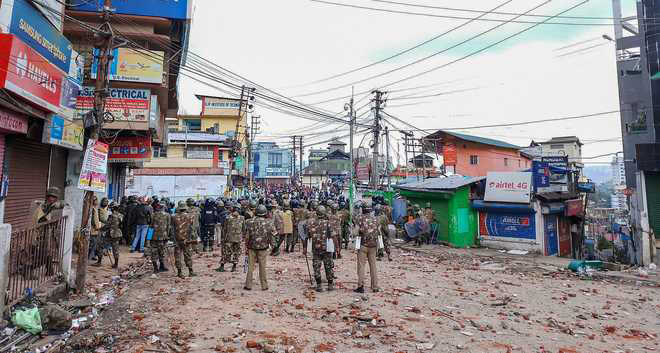
The recent violence has brought the Punjabi Colony in Shillong into the limelight and it remains that way because of the incalcitrant attitude of a small section among the majority Khasi population. The small enclave in Shillong has housed Punjabis, mostly Sikhs, for two centuries and counting. After the violence against the Sikhs, the state was expected to provide succour and assurance about their safety. The Meghalaya Government, however, is sending adverse signals about its intention by dusting out a 15-year-old plan to relocate the Sikh families that live there. The last thing that a minority community that has been at the receiving end of violence should have to fear is dislocation from homes. The National Commission for Minorities’ direction to maintain status quo is thus a positive development that gives a breather and allows various parties concerned to find ways to promote communal amity.The state’s urban department puts the number of inhabitants at around 6,000 Sikhs and 4,000 Hindus. Even if the number is less, a minority needs to be treated with extra empathy. However, the local administration and the residents operate on different wavelengths. If the Sikhs are resisting their relocation, people living in places where the population is supposed to be relocated are also up in arms. A small incident had triggered the earlier violence, and it is clear that the security forces will have to continue to play a role in protecting the minority community.It is noteworthy that there has been no loss of life unlike during the distressing progroms witnessed against the Bengalis, Nepalis and Biharis. But the communal colour which the clash took has similarities with the earlier targeting of minorities. It is sad that Khasis, themselves in a minority outside Meghalaya, did not show the required sensitivity in dealing with another minority community in their midst. The tribal and religious loyalties need to be subsumed under the requirements of justice, the rule of law and the administrative dharma. Those who live in the Punjabi Colony are as much a part of Meghalaya as anyone else. They must be treated and made to feel as such.
Rifleman Aurangzeb’s killing must show soldiers why SOPs matter, but Rashtriya Rifles can’t be labelled ‘unprofessional’ by Lt Gen Shyed Ata Hasnain

Rifleman Aurangzeb of the Jammu and Kashmir Light Infantry (JAKLI) posted with 44 Rashtriya Rifles (RR) was killed by terrorists on 14 Jun 2018 after he was abducted at gunpoint near Shopian in south Kashmir. The 25-year-old Gujjar Muslim from Poonch was part of the operation which neutralised Hizbul Mujahideen (HM) leader Sameer Tiger and was on the terrorist outfit’s hit list along with his company commander Major Shukla who was then convalescing in a hospital due to a bullet wound.
Aurangzeb was abducted soon after he stepped out of his 44 Rashtriya Rifle company post near Shadimarg in Shopian and hailed a private car to Shopian town in order to take another cab to Poonch, his hometown, to reach home for Eid-ul-Fitr, the festival depicting the end of the 30-day period of fasting (Ramzan). Many other JAKLI soldiers from the Valley would have done the same to reach their homes.
Now, fresh versions of the killing have revealed that a local woman who Aurangzeb had befriended could have been forced by the terrorists to part with information about his travel plans. Since mobile communication is now freely available in Rashtriya Rifles camps, Aurangzeb did not need to physically meet her often, as would have been the case in earlier years; information exchange would have taken place through the airwaves.
The involvement of a local woman adds to the many questions that people less aware of the ways of soldiers in the Valley are already asking, such as: what was a JAKLI soldier doing with an RR unit affiliated to the Rajput Regiment; why was he sporting a beard and long hair against normal army practice of proper grooming; why was he allowed to proceed alone on leave against the established practice of catching an organised convoy from Srinagar and traveling under escort; isn’t the security of individual soldiers the responsibility of the Indian Army? These need answers and some additional explanations to restore the full professional confidence which Indians have in the Indian Army.
From a generic point of view, it must be known that there is no consistent pattern of terror activity in the Valley. The 44 Rashtriya Rifles has long been deployed in Shopian, one of the hotbeds of terrorism in Kashmir. The RR units have a personnel relief system wherein almost half the manpower turnover every year but most units stay where they are adding to the continuity in intelligence gathering and familiarisation with the operating environment. So, every soldier does two years and a little more as a tour of duty.
Operations are like adrenaline to soldiers and they can take tremendous stress and strain. Many a time small team operations are launched to set up larger operations; the formers are much more stressful. An inherent system of adherence to SOPs exists at all times but is contingent upon the environment and certain freedoms and leeways are always permitted. That is because these are not conventional operations and need much more individual and team guile, local knowledge of history, culture, personalities, ability to cultivate sources and to merge with the environment when necessary. Aurangzeb’s work was just that — the enhancement of local contact and liaison; a dangerous work at any time.
A successful high profile operation against Sameer Tiger had exposed him somewhat. It was a practice by higher commanders in earlier years wherein they preferred to ease out those officers and men who were exposed or had a personal threat focused against them. Yet, that is not always necessary if the unit is confident of adhering to the time-tested basic SOPs with everything else being flexible.
So, Aurangzeb was with the 44 Rashtriya Rifles like many other local soldiers for the purpose of liaison, language and for a better understanding of local conditions. Growing hair and beard in an operational environment is no big deal as this helps hide the ‘fauji‘ in the soldier. It is a risky business, thus it’s necessary to ensure that full precautions are taken at all times.
In the heat of operations, as successful as those of 44 Rashtriya Rifles (I still consider it as one of the best units under my command), it’s easy to get carried away with the over-confidence, the nonchalance and the romance of small team operations. That is where the senior hierarchy comes in. An experienced senior commander especially one who has experienced similar environment will, on the one hand, encourage innovation, guile, and fearlessness, he will also quietly ensure that the basics are never forgotten.
Many a commander I have known at brigade and division level institute a system of their staff resorting to taking turns to ensure that limited micromanagement for security is always in place through reminders to appropriate appointments in units. A system many soldiers have followed adheres to nightly calls to high-risk units on the Line of Control (LOC) and the counter-terror grid to speak to officers, men motivating them and appreciating their achievements but also equally rendering advice on precautions and drills which in moments of elation must not be forgotten; adding own experience to this is always good as many senior officers these days are those who have been actively involved in such operations at junior levels. This system adds to written advisories which sometimes take time to permeate lower down.
A lapse must not be allowed to label the Rashtriya Rifles units as unprofessional and insensitive; they hardly function in a zero-error environment. Yet, such lapses are highly avoidable as the risk for operational effectiveness may still be taken but not for individual safety. The security of soldiers is very much a collective responsibility. Gladiatorial type-casting is the other phenomenon to avoid as it gives a false sense of bravado in this unpredictable environment.
Lastly, the Rashtriya Rifles has been the best thing which happened to the Indian Army, it’s the boldest experiment in years. For the Indian Army, it is worth debating whether some additional turnover of units, from high risk to lower intensity environment and vice versa, will be in order. No doubt the continuity of the units despite a 50 percent turnover of personnel has held out well, but some units continue to remain in risk-prone areas far too long hogging all the glory while others receive little such chance.
A befitting tribute to late Rifleman Aurangzeb will be the absence of any further isolated killing of a soldier through the best adherence to drills and orders without losing full operational control.
The author is a retired lieutenant general and former general officer commanding 15 and 21 Corps

